#publication: the shorthorn
Explore tagged Tumblr posts
Text
Women's March brings protesters to campus in support of women's reproductive rights
#school: university of texas arlington#publication: the shorthorn#year: 2021#genre: news article#subject matter: national#subject matter: texas#subject matter: campus#subject matter: protest
0 notes
Text
Discover Jimmy Page
A complete list of his most famous electric guitars - pt. 1
from pageysartgallery
1959 Fender ‘Dragon’ Telecaster - restored in 2007
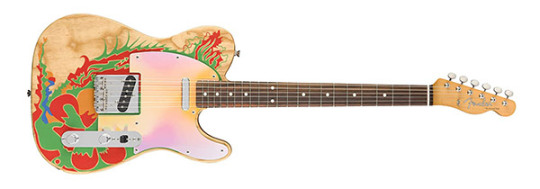
Finish: Custom yellow with dragon painting, it was originally white
Years used: 1966 to early 1970s, only the body is left of it
When Jeff Beck was recommended by Page to join the Yardbirds in 1965, Beck gave him this 1959 Fender Telecaster, which originally had a white finish. In 1967, Page decided to add eight circular mirrors to the body, completely changing the instrument’s visual identity. Eventually, he removed the mirrors and completely repainted the guitar in a yellow-ish color, and added the now-famous dragon painting.
This was the main Zeppelin guitar, live and in the studio from from 1968 to April 1969. It was also used on the solo for “Stairway To Heaven” in the studio.
Unfortunately, when Page got back from Zeppelin’s American tour, he found out that one of his friends had repainted it. Although intended as an act of kindness, his friend practically ruined the guitar and its wiring. Page disassembled the poor instrument and used some of its parts on other guitars. The body is reportedly still in his possession, but he refuses to share pictures of it with the public.
“The whole idea was to put an extra life into the guitar. The whole of the Dragon artwork it starts off – I don’t do a sort of a pre-run of it. I wanted to use sort of poster paint which was used in the production of those psychedelic posters.”
— Jimmy Page (x)
1961 Danelectro Shorthorn - a bit of a mongrel, made from the best bits of two Dano's

Finish: Black with a white pickguard
Years used: Mid-1960s to now
Danelectro guitars used to have major success back in the 1960s. Formed in 1947, the company operated independently until 1966 when it was sold to the Music Corporation of America. Unfortunately, the brand went under in 1969, only to be resurrected in the late 1990s.
In his vast arsenal of guitars, Jimmy Page still has his old Danelectro Shorthorn model, also known under designated names 3021 and 59DC. This particular instrument, featuring two “lipstick” single-coil pickups, was manufactured back in 1961 and Page bought it in the mid-1960s. The story goes that he first used it on stage with the Yardbirds. Occasionally, the guitar found its use with Led Zeppelin. The guitar is often associated with “Kashmir” as it was used for the song many times during Led Zeppelin’s shows.
It is a very simple instrument with a hardtail bridge, a 3-way switch for its two pickups, master volume control, master tone control, and a pretty-looking white pickguard covering most of the treble side of the body. And, what many guitar lovers don’t know, Danelectro Shorthorn actually features a semi-hollow body.
1959 Gibson Les Paul Standard - The ‘Number One’. The most iconic and still Jimmy’s favourite and most used Zep guitar. Noticeable lack of flame finish.

Finish: Sunburst
Years used: 1969 to now
This is a Gibson Les Paul Standard model built back in 1959 or early 1960. These instruments are popularly known as “Holy Grail” guitars and can reach some mind-boggling prices among avid collectors. This particular one found its way into Jimmy’s collection in 1969 when Joe Walsh, who later became a member of the Eagles, gave it to him as a gift. As Walsh explained many years later, he just thought that Jimmy needed a nice Les Paul in his collection, since it fits Zeppelin’s music.
The instrument saw some modifications before it came into Page’s possession. One of the main changes was the neck, which was sanded, thus making it significantly thinner. Jimmy did some of his own changes by adding gold-plated Grover tuning machines, as well as changing its pickups multiple times. The pickup that saw the most action on it in the 1970s was T-Top humbucker. This one was eventually swapped in the 1990s for a modified Seymour Duncan, and Page even added a “push-pull” potentiometer to it for the reverse phase mode of operation. The guitar still remains his “Number One” to this day.
“As soon as I played the Les Paul I fell in love. Not that the Tele isn’t user friendly, but the Les Paul was gorgeous and easy to play. It just seemed like a good touring guitar. It’s more of a fight with the Telecaster but there are rewards.”
— Jimmy Page
Custom-Made Gibson EDS-1275

Finish: Cherry red
Years used: Most of the 1970s, it’s most likely still in his possession
When you think of Led Zeppelin and the 1970s, it’s almost impossible not to picture Jimmy Page with his legendary double-neck guitar. This is mostly due to the fact that he used it for “Stairway to Heaven” during live shows.
Gibson’s EDS-1275 is one of the most innovative guitar models. Entering production in 1963, it is believed that this was the first-ever double-neck solid-body electric guitar. Featuring one conventional 6-string neck and another 12-string neck, all with a double set of pickups, it allowed guitar players to create more tones with a single instrument.
Page asked Gibson to make him one in 1971, although EDS-1275 was not in production anymore at that point. Nonetheless, they agreed and made a special one for him, which featured a modified body shape compared to the original commercially available model. It’s not completely certain, but it’s quite possible that Jimmy Page popularized the instrument so much that Gibson eventually started making them again throughout the 1970s and later decades.
“We recorded Stairway to Heaven, and there was like a guitar army on it – as they used to tease me. Because of that, it needed more texture than just one guitar. The double-neck seemed like a perfect compromise.”
— Jimmy Page (x)
1960 Gibson Les Paul Custom ‘Black Beauty’ - Jimmy's main session guitar, used at Royal Albert Hall in 1970 and a few other early gigs. Stolen in 1970, recovered 2018.
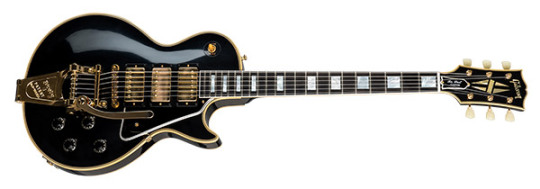
Finish: Black with golden hardware
Years used: Early 1960s to 1970
Things really took a different turn when Jimmy Page switched over to Les Paul guitars full-time, which eventually became his go-to guitar model. However, he actually got his hands on one way before Led Zeppelin’s formation, sometime in the early 1960s. Nicknamed “Black Beauty,” this was a black Gibson Les Paul Custom, most likely manufactured back in 1960. Some sources claim that he traded his Gretsch Chet Atkins signature model for it.
Jimmy used “Black Beauty” as the main guitar for his session work. Of course, the instrument found its way on early Led Zeppelin records. Being a Les Paul Custom model, it featured some significantly improved aesthetic traits. This includes 3-ply binding, golden hardware, black pickguard, the easily-recognizable pearl logo on the headstock, and pearl inlays on the fretboard. Additionally, the guitar came with a Bigsby tremolo bridge and tailpiece, as well as three humbuckers.
Jimmy Page was scared to take it on the road with him. And when he finally did go overseas to the United States, his precious “Black Beauty” got stolen. Its whereabouts were a mystery for decades until the instrument was finally retrieved in 2015. It still remains one of the most iconic guitars in history.
“Black Beauty, which got nicked in the States; it disappeared in an airport, somewhere between Boston and Montreal. A lot of my studio work had been done with that guitar. I didn’t want to take it out of the house. Funny that once I did take it out, it got nicked!”
— Jimmy Page, Guitar World, 1991
1959 Gibson Les Paul Standard - ‘Number Two’ bought as a backup in 1973, slightly darker sunburst than the #1. It's a bit meatier and louder than the #1 according to Jimmy's guitar tech.
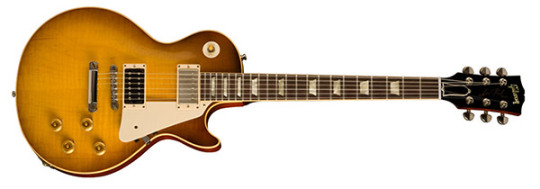
Finish: Sunburst
Years used: 1973 to now
Jimmy fell so much in love with his Gibson Les Paul Standard that he got ahold of another “Holy Grail” in the early 1970s as a backup option, popularly known as the “Number Two.” In order to make it feel and sound exactly the same as the “Number One,” he did some significant modifications to it, including the neck sanding and the addition of Grover tuning machines. But although it looks pretty similar to the “Number One,” this Les Paul Standard has a slightly darker shade, making it look browner.
Compared to the main Les Paul, this one had more modifications done to its electronics. All four of its potentiometers were swapped for “push-pull” ones and there are even some additional switches. As a result, Jimmy was able not only to do phase reverse but also coil-splitting and coil-tapping, allowing for an abundance of sonic options.
“I customized my number two Les Paul, which again is a real old vintage one. However, that gave any combination of all of these (pickups). But, it was a little fussy, because all of the knobs were push/pull, and I had little switches (below the pickguard).
Reality of it was – the thing that I found most important to me was the fact that you could reverse the phase on this. By reversing the phase you get a close approximation to the sound Peter Green would get.”
— Jimmy Page (x)
1969 Les Paul Deluxe - ‘Number Three’, metallic purple red, as seen on “Whole Lotta Love” on TSRTS
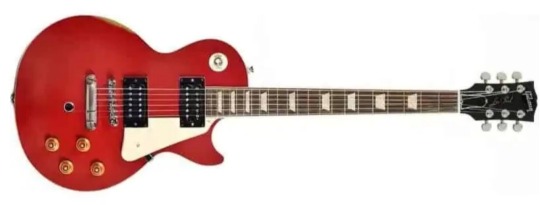
Finish: Red
Years used: From 1970 or 1969
Page’s love for Les Paul guitars has always been immense. So it’s no wonder that he also had his “Number Three,” which is a Gibson Les Paul Deluxe model. However, not much is known about the instrument, and some believe that this was a Les Paul Standard. But what makes it interesting is, that besides being traditionally a “third” one, he actually got the guitar before the second Les Paul Standard.
The “Number Three” was used sporadically throughout the 1970s, mostly between ’73 and ’75. Towards the mid-80s, Jimmy installed a B-Bender in it and started using the guitar again more extensively. Most recently, he used it on “Over Now” from the 1993 release Coverdale / Page.
“Probably my favorite effect was the one used on “Over Now.” After David sings, “I release the dogs of war,” you hear this growl. I produced that by running my purple B-Bender Les Paul through an early-sixties Vox wah, a DigiTech Whammy Pedal set “deep,” an old Octavia, and one of my old one-hundred-watt Marshall Super Leads, which I used with Zeppelin.”
— Jimmy Page, ‘Light and Shade: Conversations with Jimmy Page’
1964 Fender Stratocaster - Used at Earls Court in 1975 for one night only on “No Quarter” plus on “For Your Life” from Presence and on ITTOD. Also used at Knebworth in 1979 and '80 tour on “In The Evening”
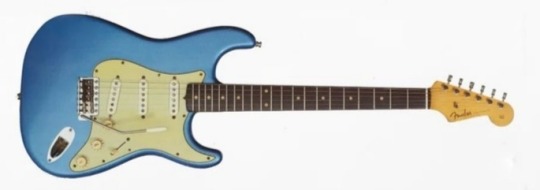
Finish: Lake placid blue
Years used: Second half of the 1970s and 1980s
A 1964 Fender Stratocaster model, painted in a very aesthetically pleasing shade of blue (referred to as “lake placid blue”) and featuring a classic white electronics cover. While most of the features on this model are what you’d expect from a Fender Strat, these 1960s models featured rosewood fretboards instead of “conventional” maple ones.
The story goes that Page bought it back in 1975 and that it was used on Zeppelin’s “Presence” album for a few songs, although this has not been confirmed. Page claimed that the instrument was used since 1978, and there’s also a theory that he implemented it on the 1979 album “In Through the Out Door.”
1950s Futurama/Grazioso
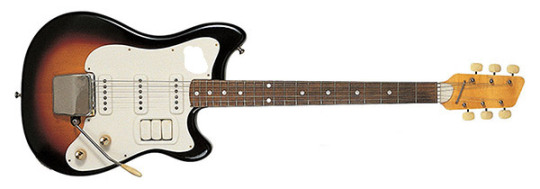
Finish: Sunburst
Years used: Late 1950s to the mid-1960s
These guitars were made in Czechoslovakia by a company called Drevokov. Originally called Grazioso for their domestic market, they had their name changed to Futurama for foreign markets. These came with three single-coil pickups, tremolo bridge (a type that you don’t see on any other known guitars), sunburst finish, and a body that somewhat resembles Fender’s Jazzmaster. It featured many other unconventional traits, including individual on-off pickup switches that eerily resemble old light switches.
Page used this one at the very beginning of his guitar-playing career. It’s not exactly certain when it stopped being a part of his inventory, nor where it’s currently at, but it’s assumed that this Futurama saw some action during Page’s time as a session guitar player in the first half of the 1960s.
“See, that’s the first electric guitar I get. The one before it, the Höfner, my dad buys that, but after that, [he laughs]—I don’t know, maybe he was psychic and he knew what was coming, because there’s a whole procession of guitars that come into my life over the next few years. But that’s the first one, the Grazioso. It looked and felt like an electric guitar, even though it wasn’t a Fender.”
— Jimmy Page (x)
1965 Fender Electric XII
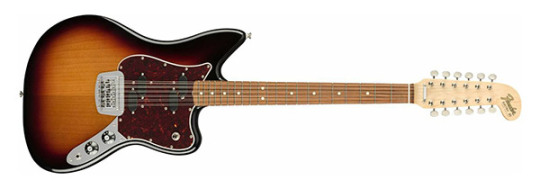
Finish: Sunburst
Years used: Early 1970s and it’s most likely still in his possession
Before the Gibson EDS-1275, Jimmy had another 12-string guitar, Fender’s old Electric XII. This particular instrument was manufactured sometime in 1965. It was used in the studio, most popularly for the recording of “Stairway to Heaven.” However, producer Andy John who worked with Zeppelin on their legendary fourth record claims that it was actually a Rickenbacker 12-string that was included in the song. It’s still one of the main mysteries, even to this point.
Fender’s Electric XII is easily recognizable for its weird “hockey stick” headstock. It also has two split-coil pickups, which is another very unconventional trait for electric guitars as you mostly see these kinds of pickups on basses.
“I used a Fender 12-string in the studio. And before the Fender, I used a Vox 12-string. You can hear the Vox on things like “Thank You”, and “Living Loving Maid”. On “Stairway” I used both my Vox Phantom that I used on “Thank You” and my Fender Electric XII. They both sort’ve sounded the same. It was more about how they played. They felt different. On “The Song Remains The Same”, it’s just the Fender.”
— Jimmy Page (x)
sources: (x) (x) (x) (x)
Featured in the next part: the 1953 brown Fender Telecaster, the 1967 Vox Phantom XII, the 2nd no3 Gibson Les Paul Standard, the Gibson Les Paul TransPerformance, the Gretsch Country Gentleman and the Fender Telecaster with its regular white finish and circular mirrors glued to the body
#jimmy page#pageysartgallery#led zeppelin#the firm#the yardbirds#robert plant#john bonham#john paul jones#paul rodgers#60s#70s#80s#classic rock#classic rock fandom#rock n roll#hard rock#blues rock#rock music#jeff beck#discover jp#guitars#guitar#guitarist#gibson#fender#telecaster#stratocaster#danelectro#by dee dee 🌺🕯️
69 notes
·
View notes
Photo





Brigadier Simon Fraser, 15th Lord Lovat died on March 16th 1995 in Beauly, Invernesshire.
Simon Christopher Joseph Fraser, 15th Lord Lovat was born in 1911 and assumed the family titles in 1933. He was educated at Ampleforth College and attended Oxford University. He joined the University's Cavalry Squadron and, after graduation in 1932, was commissioned into the Scots Guards.
He was also known as the 24th MacShimidh (Chief of Clan Fraser of Lovat), his friends knew him as Shimi, his clan referred to him as MacShimidh, his Gaelic patronym, meaning Son of Simon. Simon is the favoured family name for the Chiefs of Clan Fraser.
Shimi continued the military traditions of his father, Simon Fraser, 14th Lord Lovat, the founder of the Lovat Scouts., but joined the commandos, some time in 1940, after a disagreement with his CO in the Lovat Scouts. He served as a commando leader in World War II Eventually posted to No.4 Commando, Lovat's first action of the War came in March 1941 with the Lofoten Raid. The Lofoten Islands lay off the coast of northern Norway, and the object of the operation was to destroy oil installations, enemy shipping, capture prisoners and to bring back Norwegian volunteers for active service. The raid was an enormous success and, without meeting any opposition worth speaking of, the Commandos destroyed eighteen factories and seven installations holding eight hundred thousand gallons of oil, and they also captured over two hundred prisoners, sunk in excess of twenty thousand tons of enemy shipping, and returned with three hundred Norwegian volunteers. He also led 4 Commando group on the raid on Dieppe in 1942 in which his plan for the capture of the Varengeville battery was masterly. And proved brilliantly successful. Yet he had to fight the orthodox planning from above tenaciously to get his way. His was the choice of the landing beaches. And the successful scaling of the formidable cliffs and the fierce bloody attack and hand-to-hand fighting to take the battery were a model of what a commando raid from the sea could be. Every gun was silenced. And although the main attack on the harbour was a disaster, it could have been much worse if the guns had not been so successfully silenced.
Hitler placed a bounty of a thousand Marks on his head, outraged by stories of his audacity. He received the DSO and Military Cross. He also issued orders that Lovat and his fellow Scot David Stirling to be shot as terrorists if captured.
On D Day when he ordered his personal piper Bill Milllin to pipe the commandos and himself ashore at Sword Beach, in defiance of specific orders not to allow such an action in battled, the piper questioned the order, citing the regulations, he recalled later, Lord Lovat replied: “Ah, but that’s the English War Office. You and I are both Scottish, and that doesn’t apply.
Lord Lovat was wounded six days later and he calmly, gave orders that not a step back should be taken, then called for a priest and was evacuated. Those who saw him then could not believe he could possibly survive.
But survive he did, but took no further party in the war, after which he served as Winston Churchill's personal emissary to Stalin in Moscow. Churchill described him to Stalin as 'the mildest mannered man that ever scuttled ships or cut a throat'. After retiring from public life he turned his attentions to developing and devoted much of his time to the family estates of 250,000 acres in the highlands and to Fraser Clan affairs. He bred a pedigree herd of shorthorn cattle and was an international judge of cattle travelling widely to Canada, America, Latin America and Australia in that regard. He was also chieftain of Lovat Shinty Club, the local shinty team which bears his family name.
In his final two years he saw tow of his sons die and it was revealed that the second had suffered serious business losses and left large debts on the Beaufort estates that have been for so long associated with the name of Lovat.
Brigadier Lord Lovat passed away at Beauly, Inverness-shire 16th March 1995.
Shimi Lovat's military background ran back through generations of Frasers, including Simon Fraser, known as the Patriot, hung drawn and quartered at Tower Hill at Edward I's orders, and Simon Lovat, “The Fox” was beheaded after the 1745 rebellion, he featured in the Outlander TV series.
52 notes
·
View notes
Text
A1 vs. A2 Milk
The wellness impacts of milk may depend upon the type of cow it came from.Currently, A2 milk is marketed as a healthier choice than regular A1 milk.Advocates assert that A2 has numerous wellness benefits and is much easier for individuals with milk intolerance to absorb.This article takes an unbiased look at the science behind A1 and also A2 milk.
What do the terms imply?
Casein is the largest group of healthy proteins in milk, making up about 80% of overall protein content. There are several kinds of casein in milk. Beta-casein is the second most widespread as well as exists in at the very least 13 different types (1Trusted Resource).
earthomaya
The two most typical kinds are:
A1 beta-casein. Milk from types of cows that originated in north Europe is typically high in A1 beta-casein. These breeds include Holstein, Friesian, Ayrshire, and also British Shorthorn. A2 beta-casein. Milk that is high in A2 beta-casein is mainly found in breeds that originated in the Channel Islands and also southern France. These include Guernsey, Jacket, Charolais, as well as Limousin cows. Normal milk includes both A1 and A2 beta-casein, but A2 milk has just A2 beta-casein. Some researches recommend that A1 beta-casein may be unsafe and that A2 beta-casein is a more secure selection. Thus, there is some public as well as clinical debate over these two sorts of milk. A2 milk is created and marketed by the A2 Milk Firm and also contains no A1 beta-casein.

RECAP
A1 and also A2 milk consist of various types of beta-casein healthy protein Some researches show that A2 milk might be the healthier of the two.
Adverse cases concerning A1 protein.
Beta-casomorphin-7 (BCM-7) is an opioid peptide launched throughout the food digestion of A1 beta-casein. It's the reason some individuals think normal milk to be less healthy and balanced than A2 milk. A few research groups suggest that BCM-7 might be connected to kind 1 diabetes, heart problem, infant death, autism, and gastrointestinal troubles. While BCM-7 might impact your digestion system, it's still unclear to what level BCM-7 is taken in undamaged right into your blood. Studies have not located BCM-7 in the blood of healthy and balanced adults who consume cow's milk, but a few tests suggest that BCM-7 may be present in infants. While BCM-7 has actually been thoroughly looked into, its overall wellness impacts remain uncertain.
Type 1 diabetic issues
Type 1 diabetic issues is normally identified in children and identified by an absence of insulin. A number of studies indicate that drinking A1 milk throughout childhood boosts your risk of type 1 diabetes mellitus. Nonetheless, these studies are empirical. They can not prove that A1 beta-casein triggers kind 1 diabetes-- only that those who are obtaining more of it are at a higher danger. While some pet researches have actually discovered no distinction in between A1 and also A2 beta-casein, others show A1 beta-casein to have either protective or negative impacts on type 1 diabetes mellitus. Up until now, no scientific trials in humans have checked out the impact of A1 beta-casein on type 1 diabetes mellitus.
Heart disease
2 observational research studies connect A1 milk usage to a boosted threat of heart disease. One examination in bunnies revealed that A1 beta-casein advertised fat accumulation in harmed blood vessels. This accumulation was much lower when the rabbits taken in A2 beta-casein. Fat buildup may potentially obstruct blood vessels and also cause heart disease. Still, the human significance of the outcomes has been discussed. Until now, 2 tests have actually examined the effects of A1 milk on heart problem danger factors in people. In one research in 15 grownups at high threat of heart disease, no substantial unfavorable effects were observed. A1 and A2 had similar effects on blood vessel function, high blood pressure, blood fats, and inflammatory pens. An additional research study discovered no substantial distinctions in the impacts of A1 and also A2 casein on blood cholesterol.
Sudden infant death syndrome
Sudden infant death syndrome (SIDS) is the most usual cause of death in babies under one year old. SIDS is the unanticipated fatality of an infant without an evident cause. Some scientists have guessed that BCM-7 might be involved in some cases of SIDS. One study found high levels of BCM-7 in the blood of babies that briefly stopped breathing during rest. This condition, referred to as rest apnea, is linked to an increased danger of SIDS. These outcomes indicate that some children may be sensitive to the A1 beta-casein found in cow's milk. Yet, refresher courses are required prior to any company final thoughts can be gotten to.
Autism
Autism is a mental condition defined by bad social communication and recurring behavior. Theoretically, peptides like BCM-7 could play a role in the development of autism. However, studies do not support all of the suggested mechanisms. One study in babies found greater levels of BCM-7 in those fed cow's milk contrasted to those that were breastfed. Notably, levels of BCM-7 went down quickly in several of the infants while remaining high in others.

For those that preserved these high degrees, BCM-7 was highly related to an impaired capability to plan as well as execute actions.
One more study indicates that alcohol consumption cow's milk might aggravate behavior signs in kids with autism. Yet various other studies discovered no effects on behavior. Thus far, no human tests have actually specifically checked out the effects of A1 and also A2 milk on autism signs and symptoms. RECAP A couple of researches recommend that A1 beta-casein and also the peptide BCM-7 might be linked to diabetic issues, heart disease, autism, as well as SIDS. Still, outcomes are combined and also a lot more research study is needed.
Digestion health
Lactose intolerance is the inability to totally absorb milk sugar (lactose). This is a typical root cause of bloating, gas, as well as diarrhea. The amount of lactose in A1 as well as A2 milk is the same. Nevertheless, some people feel that A2 milk creates less bloating than A1 milk. Actually, studies indicate that milk components aside from lactose might cause digestion pain.
Researchers have actually suggested that particular milk healthy proteins might be accountable for some individuals's milk intolerance. One research study in 41 individuals showed that A1 milk triggers softer stools than A2 milk in some individuals, while one more research in Chinese grownups discovered that A2 milk led to significantly much less digestive system pain after dishes. In addition, pet and human studies suggest that A1 beta-casein might boost inflammation in the digestion system.
RECAP Growing evidence recommends that A1 beta-casein activates damaging gastrointestinal symptoms in some individuals.
0 notes
Text
Automation in Dairy Industry & Role of Dairy Supply Chain Services

Automation in Dairy Industry
Many dairy farmers, processors, and distributors employ technology to automate tasks previously done manually. Automation not only streamlines the work, but it often allows farmers to produce more and better products and continually monitor their herds’ health. It also helps those products move from farms to consumers’ tables more quickly and with greater visibility.
Dairy Farming
Dairy farming has a significant environmental impact on land, water usage, greenhouse gas emissions, other natural resources, and human health risks due to using antibiotics in cows for production purposes.
Cattle could be kept in a barn or free-stall housing instead of tied outside 24/7 year-round except during bad weather. In all dairies today, calves are separated from their mothers within a day to two weeks after birth, depending on the size and type of dairy, and fed formula rather than milk. Dairy cows typically die before 15 because of production-related health problems such as mastitis or lameness.
Cattles
The breeds that yield lots of milk are also more likely to produce twins; those calves may be raised for beef or veal. The cattle must give birth to lactate (make milk), but having a single calf every year is insufficient. Today, most dairy herds consist of more than one breed, e.g., Holsteins and Jerseys, Guernseys and Ayrshires, Brown Swiss and Milking Shorthorns. Despite artificially inseminating cows, dairy cows are still likely to have calves only once every one or two years.
Dairy farms can be small operations with just a few milking cows requiring the farmer’s daily labour, or extensive factory-like operations with 1000+ cows being milked three times a day by hired labour and producing hundreds of thousands of litres per year. Dairy farms generally sell their male calves for veal meat production, while others may keep the heifers (female) for replacements when needed. A farm that holds its replacement heifers is known as a cow-calf operation. Dairy farms that produce more milk than they need may choose to sell part or all of their production to receive some income rather than having it go to waste. Dairy farmers receive payment based on the quality and quantity of milk produced by their herd. The cows are milked twice a day, but during peak production months, the farmer may spend additional time milking them three times a day or more to help them produce even more milk.
Size of the Dairy Farming Industry
Dairy farming has become an increasingly large industry over the last century. As the demand for dairy products grows worldwide, so does the number of dairy farms in operation around the world. Dairy processing is often carried out on much larger scales than dairy farming. Dairy factories were initially established to recover cream from whole milk; recovery of skimmed milk was an afterthought and became feasible only when technological developments allowed it. Separated cream was (and is) a significant product in milk processing, as it is used to produce butter, cream and many soft-drink flavours. The skim milk was generally dried to form a powder, which can be sold as a health food for children or as an ingredient in the manufacture of animal feeds. The dairy industry has been subject to severe fluctuations in pricing together with changing public opinion, restrictive marketing practices from retailers and pressure from other countries that have enabled them to sell directly into your country. Dairy farmers have been rapidly disappearing over the past decades, and the number of cows has dropped by 40% since 1990 alone. Dairy farms are shifting towards more giant factories called Concentrated Animal Feeding Operations (CAFOs), where animals are inside most or all of their lives. Dairy products are made with milk from cows raised in Concentrated Animal Feeding Operations (CAFOs). An example is the concentrated milk operation of Chino Dairy, which was fined $100,000 for animal cruelty violations.
International Market
Dairy farmers will tell you that producing the highest quality possible under humane conditions is how they can compete successfully on an international market. Many dairy farmers complain about their treatment by the corporations who buy their milk and pay them price per litre instead of price per tonne of feed consumed. Dairy farmers also struggle to get access to veterinary drugs explicitly developed for animals under natural conditions. Most intensive dairy farming would be impossible without these drugs, yet drug companies charge very high prices, often prohibiting their use across borders. Dairy farmers are also having difficulties continuing their business with the high costs of inputs, which they cannot pass on to consumers anymore due to the increased competition in the market.
Dairy Supply Chain
Have you ever wondered how milk gets from the cow to your home? Dairy products make up a significant part of many diets around the world. Dairy farms are responsible for milk production, processing it into different dairy products such as cheese or yogurt, and distributing those products to grocery stores and restaurants where consumers can purchase them. Dairy farms significantly impact the world economy, providing jobs and revenue for farmers and other business people.
Mana Agro DMCC is one of the most prominent dairy supply chain experts that supply products in the MENA region.
Source: https://goodpostin.medium.com/automation-in-dairy-industry-role-of-dairy-supply-chain-services-9f00d1238643
0 notes
Photo

Just yesterday the internet was abuzz with a new Forest Service-themed #Bronco from Filson, so why not take a look at an actual Forest Service Bronco? The USFS helps fight fires and maintain forests and grasslands, and it’s the largest forest research organization in the world. It’s work is largely out of the public eye, but the trucks are immediately recognizable. Almost all @u.s.forestservice fleet vehicles are painted Federal Standard 595, color chip No. 14260 - a really nice minty green hue, most often found trucks that need to be able to go places most other vehicles can’t. When they’re old enough to be replaced, they enter the civilian universe. This Bronco dates from 1992-96 - a generation most famous for, er, other reasons. The basic design of the old-school Bronco hardly changed at all from 1980 to 1996, though it did get two successive visual refreshes under the direction of Ford’s then style-boss Jack Telnack, just like the F-series pickups it was based on. The real period of creativity for this particular truck happened much earlier, from 1971 to 1974. The original Bronco (bit.ly/35t38hm) was an offroad all-star but it wasn’t a big seller and when Chevy’s pickup-based Blazer came along, it was both cheaper to build and more appealing to a broader range of customers. In 1971 Ford set about creating a replacement Bronco line to counter it - eventually creating the Longhorn, Midhorn, and Shorthorn proposals; almost a full line of SUVs. But cost and complexity kept pushing back the intro date, until, in late 1973, OPEC derailed the whole project. Of the proposals, only the shorthorn - designed by Ford stylist Dick Nesbitt - made it to production and even then not until 1977. It used most of the F-series hardware to keep costs down, but had a full body with a removable rear top, very much in the mold of the Blazer but a little more stylized. When the 7th-gen F-series debuted in 1980, the “shorthorn” evolved with it. It received every F-series update after that and was quite popular, but big 2-door SUVs started to fade in the 90s - though the Bronco was still selling pretty well when Ford axed it in favor of the 4-door Expedition for 1997. (at Tacoma, Washington) https://www.instagram.com/p/CGsdLy4FLhU/?igshid=1tt6svdk6wjsx
0 notes
Text
A City and its Forms
Introduction:
The culmination of a city is largely dictated by what can be seen as arbitrary, without an overall understanding of the context and its significance many instances can be passed without a second thought, but it is actually the success/failure of these formations that can make or break the prosperity of an area. We look to the philosophies of Kevin Lynch as a driving guide to better understand the connections between community values and urban attributes, both physical and mental, that propel elements of connectedness and awareness within a city. Taking his ideals into account we look to explore four particular subcategories and their relation to the urban function.
PATHS:
These arrangements can take on a number of forms, but in essence are circulatory measures that seek to guide the commuters views and movement through a given space. These can be broad expanses of an environment or small segments drawing upon the characteristics of immediate surroundings.
Crockett Row Location: Fort Worth TX.

This is an area outside of downtown Fort Worth, just off of 7th street, that takes on the ideal notions of pathing in an ideal urban setting. Distinguished facades, continuity b/w business and street life, and promotes daily commuters through mixed use establishments.


Nearly acting as a superblock, the overall design lends itself to provide a fitting ambiance and gestures of community along a few simple straightaways.
EDGES:
Often confused for “paths,” these linear elements provide form to an area, acting as a boundary between different types of spaces. Generally large in scale, these formations give credence to the transition of atmospheres and can inspire or denigrate the territory it borders.
Harold Simmons Park (concept) Location: Trinity River, Dallas TX.

A good edge formation should come with a notion to blend the perimeters of separate entities in an elegant way, by providing a fair boundary while also expressing views and activation to either side. Here we have a rather expansive, and much needed, plan to transform the empty land that runs a long side the Trinity River.

In its current state, the area does well enough to act as an edge between the downtown and largely residential districts, but the proposed plan would surely elevate that experience.

By extending an olive branch to its public usability this area could be transformed from a leftover expanse and into a prosperous community hub for the two regions.
NODES:
Nodes are strategic focus points or added concentration of city features, like squares and junctions. A successful node should have unique features inside, and intensify surroundings.
Sundance Square Plaza Location: Fort Worth TX.

Sundance Square Plaza as the heart of downtown Fort Worth is a good example of a node. The space used to be a parking lot but after rebuilt to plaza, it serves as the setting for major city events.

This core public place draws people together, creates cultural linking with the life of the city. The comfortable spacious area that allows expanded programming but also is architecturally beautiful. Retail and restaurants thriving around the plaza.

LANDMARKS:
Landmarks are reference points external to observers, which are easily identifiable physical objects in the urban landscape.
Reunion Tower Location: Dallas TX.

Reunion Tower is an observation tower that could be an iconic landmark in Dallas. This 561 ft. stalk-like structure contrasts with surrounding buildings, making it unique and memorable in urban context.

The observation deck and café is open to the public to enjoy the food and the view which attracts a lot of visitors. The tower isn’t only impressive during daytime, the exterior color-changing LEDs on the ball shape of the tower shine beautifully at night. And these lights could be programmed to display various messages for special events which connects the viewer even more.
Public Transportation: Arlington, TX
In the reading of “mobilities ii” from the book Happy City, the term heteroscedasticity that Britton describes as the idea that many cities try to fix their issues using one single solution is important to understand. The truth of the matter, and as Montgomery points out, is that cities must focus on “New Mobility''. New mobility refers to “the [freedom] of people to move in the greatest variety of ways”. One single form of transportation can not work in a city.
A prime example is the city of Paris and the Vélib' bike sharing system. One of the reasons that makes Vélib' so successful is that it doesn't work on its own. Rather, the Vélib' bike sharing system is just a small part of Paris’ large transportation system.
Public transportation should not only be established in a city's infrastructure but the functionality of it must be reliable and stress-free. The reason why car usage is so predominant in Arlington is that for one: its infrastructure has been designed for the priority of cars given that no public transportation currently exists and two: people prefer cars because they are reliable and the driver feels more in control in arriving at their destination on time (for the most part).
This could definitely change with a transit system that offers its users a variety of options. As Montgomery states, people adjust, they adapt to what the city offers.
What would be the most ideal localized regional public transit system(s) in the city of Arlington?
For Arlington the most ideal public transit system would be one that includes a variety of options including rail, metro, and bike sharing programs.
1. Rail System
The TRE is a transit line and the only transit line for that matter, that connects Dallas and Ft. Worth. With Arlington being conveniently in the middle of these two major cities, having this railway expanded to Arlington is a viable and straightforward solution.

2. Metro
The Metro Arlington Xpress (Max) was a temporary project Arlington issued to get away with saying that it has public transportation. This program connected the CentrePort TRE station to an isolated UT Arlington bus stop. Evidently, it was supposedly cut off due to funding and low ridership. However, if it were to expand its stops and the frequency of them, it will not only attract more UTA students but other riders. Many students were not even aware of this service. Accessibility is a key element in attracting more ridership. Paris is a great example of how it mastered “headway elasticity”. This term refers to how frequent buses need to stop to draw the most amount of passengers. For Alington, they must be frequent enough to be reliable and provide real-time arrival data to reduce the stress of riders. The metro should interconnect with the TRE and be prominent in downtown areas given that Arlington has two major stadiums.

3. Bike Sharing
Bike sharing would be a viable transportation option in Arlington at a smaller scale. It can start in the city center including downtown Arlington and UTA. In 2017, the Institute for Sustainability and Global Impact initiated the bike sharing program, Zagster. However, after a couple of years it suddenly disappeared. Many students thought it was a great service to have on campus and more than a thousand students used it. We believe that a similar program can re-emerge that connects metro and rail programs alike. However, it must not only idly exist, riders must feel safe to use the service. Arlington today has designated bike lanes that do not work. Most of them function as both car lanes and bike lanes which does not make anyone want to actually use them in the fear of getting hit by a car. For a bike sharing program to be successful, a bike lane infrastructure must also be established.

In conclusion, all of these transit programs have more or less created the momentum to get Arlington some form of public transportation but evidently failed to stay. If there is a way to connect all these various forms of transportation systems into an orderly network then Arlington’s public transit system can indeed be a successful one.
Introduction by: Gary Smith
Paths, Edges by: Gary Smith
Nodes, Landmarks by: Shirley Zhang
Public Transportation by: Jackeline Menjivar
Citations:
“Mobilities II.” Happy City, by Charles Montgomery, Doubleday Canada, 2013.
“Sundance Square Plaza, The Heart of Fort Worth: 2019 ASLA Professional Awards.” Sundance Square Plaza, The Heart of Fort Worth | 2019 ASLA Professional Awards, www.asla.org/2019awards/634763-Sundance_Square_Plaza_The_Heart_Of_Fort_Worth.html.
Martin, Kyle. “Arlington Calls It Quits on MAX Bus Route, Opting for Ride-Sharing Vans Instead.” Dallas News, The Dallas Morning News, 25 Aug. 2019, www.dallasnews.com/news/2017/12/29/arlington-calls-it-quits-on-max-bus-route-opting-for-ride-sharing-vans-instead/.
Hernandez, Rocio, and Lorena Torres Romero. “UTA Looks to Renew Zagster Bike Contract.” The Shorthorn, 14 Nov. 2018, m.theshorthorn.com/news/uta-looks-to-renew-zagster-bike-contract/article_1e4d7232-e11f-11e8-9012-e3aaa0f3765f.html.
0 notes
Photo

Celebrating 100 years of the Student Publication, The Shorthorn, where it all began for me and countless others. @utashorthorn #utarlington #uta (at The University of Texas at Arlington) https://www.instagram.com/p/Bwz7nmxH6MVvQNDytKo_tUUDgRmWFJNkz9ozWI0/?utm_source=ig_tumblr_share&igshid=3oseaplu4t04
0 notes
Text
Q&A - Shorthorn Reporter Samantha
Samantha Douty, a junior journalism major and news reporter at The Shorthorn, is traveling to Washington, D.C. to cover President-elect Donald Trump’s inauguration.
We chatted with Samantha before she travelled to DC. Her Q&A below discusses how she self-funded her trip, the importance of news to students, and what she hopes for her future in journalism. You can follow Samantha as she covers the inauguration at @SamanthaDouty.

Q: Why is it important for student media to cover stories like inauguration?
A: I think it is important for students to know what is going on in the world and what better source than their student publication. Plus, being a student and a journalist in this situation gives me a different perspective than other news outlets.
Q: What inspired you to become a journalist?
A: I realized fairly recently I wanted to be a journalist. I worked on my student newspaper in high school, but I never thought I could make a career out of it. It wasn't until community college that I realized I couldn't stay away from the newsroom. I am naturally curious and love getting out of my comfort zone. Together it is a perfect combination for being a journalist. I also love telling people's stories. I value being the person to give others a voice and a platform to share their experiences.
Q: How has UTA and The Shorthorn prepared you for an experience like this?
A: This is only my second semester at UTA, but I feel I have learned a lot at The Shorthorn. I learn more from being on the job than I ever had in the classroom.
Q: You’re self-funding this trip, how did you make it happen?
A: I shared my interest with my family, and they got me the plane ticket for my birthday this December. I am lucky I have such a strong support system otherwise I wouldn't have been able to go. They also know that if they didn't help me then my ambition would have gotten the best of me and I would have gone one way or another. I saved money for food from last semester from working at The Shorthorn.
Q: Why are you so determined to enter journalism—a field that has recently been targeted with a considerable amount of criticism?
A: I am determined to enter the field because I am a journalist whether I want to be or not. I see or hear trouble and I run towards it. Now, more than ever, we need good journalists in the world. Ethical journalists. Instead of relying on others to pick up the slack, I might as well do it myself. The criticism of the field is giving me the extra motivation to enter the field as a strong, ethical person to share the whole truth with the public.
Q: How important do you think it is for students to be aware of big news events?
A: Students are the upcoming workforce in the world, our future leaders. They need to know what’s going on with any and all news to avoid repeating history. Journalists are documenting history every day and it’s one of the most undervalued careers in the world. Students in America take for granted our freedom of press. Because of journalists they are now able to know whats going on and make informed decisions about everything.
Q: How can journalists combat fake news and revitalize trust with the public?
A: The only way to combat fake news is to remain ethical and fair. Fake news will happen whether we want it to or not, but it is our jobs as journalist to ensure the public knows the truth — the whole truth.
1 note
·
View note
Text
Editorial: We can do better than Texas' upcoming sexual education update
#school: university of texas arlington#publication: the shorthorn#year: 2021#genre: editorial#subject matter: texas
0 notes
Text
Cattle Suffering “Appalling” on China Voyage
14 months after the live export voyage, Australia's Department of Agriculture has released the onboard observer's report (IO report 55) for the 22-day voyage made by the Shorthorn Express to China - the report indicates that the livestock onboard suffered from food and water deprivation, amongst other welfare issues.
Spokesperson for Vets Against Live Export (VALE) Dr. Sue Foster described the animal suffering portrayed in the report as appalling, saying: “The voyage ran out of food due mainly to rough seas reducing vessel speed which increased voyage length by three days. Very limited feed was available from late on Day 19, as the fodder supplies were exhausted, and some cattle were not fed at all during the day of discharge as zero food remained. A long voyage duration was anticipated from Day 2 so why did this vessel not turn back to Australia or load extra food at the next available Australian port?”
In addition to overall lack of food, cattle in individual pens were also deprived of food from days 5 to 13. Larger pens with a higher number of cattle had generally the same number of feed troughs provided as smaller pens with a lower number of cattle. This caused competition for access to feed troughs later in the voyage and incidents of trampling. Shy feeders went days at a time with no food.
Then the vessel ran out of water for the animals. The reverse osmosis (RO) unit was not able to produce the required amount of water on many days due to rough seas, RO unit breakdown and restricted use when the vessel was close to ports. On days 5, 8, 9-13, and 16-18, cattle on some or all decks did not have access to water for up to four hours daily.
Foster said: “During the times of severe heat and humidity when animals were displaying heat stress, there was no water. The suffering can only be imagined.”
The report states that most animals had heat stress to some degree with 5-10 percent of animals having a heat stress score of 3.5-4 (4.5 is near death) over days 7-13, often with inadequate water. Then the animals arrived in China to experience temperatures of 2 degrees Celsius.
Unsatisfactory pen and deck conditions were experienced due in part to inadequate corrective maintenance by crew, leaking water pipes and fire hydrants, malfunctioning nose bowls, build-up of the thickness of the pad, spilled feed in the aisles, high temperatures and humidity and blocked drains. Flooding was experienced due to deficiencies in the drainage system, and this contributed to temperature and humidity conditions as hatches had to remain closed.
Ventilation only had one setting. Hotter areas were identified within the decks due to ventilation infrastructure and impediments to air flow such as ramps, walls and piles of feed. Other obstructions inhibiting ventilation included feed troughs suspended from overhead wires when not in use.
Foster said: “Critically, and despite the rough seas, there was little to no bedding used until the animals arrived in China, which would create the impression that the animals had had access to appropriate bedding for the entire journey. These Australian dairy cattle which would be accustomed to a high standard of care were not only exposed to food and water deprivation, rough seas, heat and cold stress but they couldn’t even lie down in comfort. They had no bedding on this rocking multi-storey feedlot.”
Foster continued, “Sick animals no doubt suffered more. In addition, cattle in some hospital pens had the added misery of overflow of wash-down material from the decks above resulting in fecal soiling of feed and water troughs and coat contamination. Drug administration devices were unhygienic. And then two injured cattle could not be euthanized, as Chinese authorities would not allow the use of the captive bolt in port. These cattle were left on the ship and the bosun was instructed by the stockperson how to euthanize both of them once the ship left port. The fate and welfare of these cattle is unknown, the stockman having left the ship (contrary to Australian ASEL standards) before all animals were discharged.
The stockman was described as caring, however, the report would appear to indicate incompetence with poor pen and shy feeder management, inability to ration food appropriately or direct appropriate crew actions. In addition, the stockperson did not store or utilize drug administration devices in a hygienic fashion and no necropsies were performed, says Foster.
The observer concluded that the health and welfare of the cattle was adversely affected during the voyage due to a number of contributing factors, some of which were outside the control of the exporter, including weather conditions.
Foster disagreed, “The hot and humid conditions at the Equator occur all year round, and the cold conditions in China are also completely predictable. Rough seas were obviously predicted from Day 2. Anyone that can use a computer can reasonably predict weather conditions. Exporters routinely send southern Australian Bos taurus cattle to China regardless of weather predictions. Sending animals on this ship into these conditions was definitely in the control of the exporter.
“Not only was this within the control of the exporter, it was within the control of the regulator, the federal Department of Agriculture. The Department knows the temperature conditions likely to be experienced by these animals. They know that some degree of heat stress occurs in southern Bos taurus cattle on nearly every voyage crossing the Equator. They know that animals arriving in a northern Chinese winter port can experience extreme cold and that these cattle have to adapt from equatorial heat and humidity to temperatures as low as -10 degrees Celcius in less than a week.
“They also have ample evidence that many voyages to China take substantially longer than anticipated, with 11.5 percent of voyages having insufficient food due to voyages being longer than the maximum contingency for food. The Department should be insisting that at least six days extra food be carried on every China voyage - the routine three days above anticipated (ASEL) plus an extra three days to cover the possibility of extended delays as this has happened repeatedly.”
Foster says, “These observer reports, instigated by Minister Littleproud, are invaluable in identifying serious risks. It is time that the Department stop just filing them and actually analyze them. A very predictable pattern emerges on these voyages to China despite the sparse and sanitized information provided in the public domain. There are clearly numerous issues of poor ship infrastructure, mechanical failures, food deprivation, heat stress and cold stress. And why is a veterinarian mandatory on Middle Eastern voyages of three weeks but not on voyages to China? These voyages are essentially of the same duration but often of greater complexity for the exported cattle.” Foster says that it is only a matter of time before some horrified crew member or independent observer goes public as happened during the high mortality voyage of the Awassi Express. Whistleblower footage from the voyage where thousands of sheep died of heat stress caused a public outcry. Other independent observer reports have also indicated that animal welfare issues continue to occur in the industry.
from Storage Containers https://maritime-executive.com/article/cattle-suffering-appalling-on-china-voyage via http://www.rssmix.com/
0 notes
Text
These Hilarious GIFs Bring Art History to Life

Henry Stafford, Castle Howard Shorthorns, animated by Matthias Brown. Courtesy of Doncaster Museum and Art Gallery and Art UK.
Have you ever seen a cow twerk?
Neither had I—until this week, when a group of unconventional GIFs landed in my inbox. All of them were based on images of traditional landscapes, seascapes, and portraits from 18th and 19th centuries. Most of them were also really funny—the kind of thing I immediately shared with fellow art history nerds, the sort of people I knew would appreciate watching two stoic cows, painted in the mid-1800s, break into a booty dance.
The twerking cow GIF is the work of artist and animator Matthias Brown. It’s also one of a growing number of memes solicited by Art UK, a philanthropic organization that digitizes artworks in museum collections in the United Kingdom. The organization’s goal is to make art more accessible; many of the paintings its members digitize are housed in remote museums or relegated to storage, and therefore are rarely seen by the public.
“We want more people to interact with art,” Ferren Gipson, Art UK’s social media marketer, told me. “And we’re always trying to think of new ways to enhance that mission.”

Unknown artist, Frances Wansford, 1608, animated by Matthias Brown. Courtesy of Doncaster Museum Service and Art UK.

Unknown artist, Audrey Wimble, animated by Matthias Brown. Courtesy of Lewes Town Council and Art UK.
Their newest effort comes in the form of GIFs, those hyper-shareable, often humorous moving images that shimmy and flicker across the internet, enhancing—or distracting from—our online conversations. At their best, GIFs express ideas or emotions that a sentence or emoji might not be able to. My own favorites riff on popular images, and if they have a goal, it’s laughter.
A large portion of the images of paintings in Art UK’s database hold Creative Commons licenses, which means they can be shared and, in some cases, remixed by anyone who pleases (as long as they include the proper credit line). Gipson explained that these images seemed ripe for GIF-making. How fun would it be, she thought, to have contemporary creatives interpret and animate these images of age-old artworks?
Earlier this week, Art UK launched a call for submissions, encouraging anyone with basic animation skills to transform a group of images in their database into GIFs. The project was promoted with a collection of 12 GIFs, five of which Art UK commissioned from Brown. Some are splashy, endowing 19th-century subjects with effusive hand gestures and dramatic eye-rolls. Others are more subtle. In one Impressionist seascape, water ripples ever so slightly.

Edward John Cobbett, Child with Kitten. Courtesy of Worcester City Museums and Art UK.

Joseph Highmore, William Wrightson, animated by Matthias Brown. Courtesy of Doncaster Museum Service and Art UK.
Over time, Gipson and her colleagues hope to build an extensive art GIF database. So far, it seems like they’ll be able to make good on their goal. According to Ferren, just a few days after the launch, Art UK’s inaugural group of GIFs had already collectively received around 1.1 million views via the GIF-sharing platform GIPHY, and submissions have been streaming in.
But what exactly was it about these GIFs that made them such viral gold? I asked Ari Spool, GIPHY’s community operations manager and co-curator, to unpack the question. First off, she pointed to a GIF’s ability to express emotions. “GIFs made from classic paintings are no different—an emotion is conveyed in the original artwork, and then often another, sometimes more irreverent one, is layered on based on the GIF artists’ interpretation,” she explained. Of course, I can’t help but think of Brown’s irreverent cows.
“We love to share these GIFs because of the beauty of the painting but also because of the humor. It’s a two-for-one deal,” she added.
Spool also noted that GIFs can enhance the original artwork. “With a subtle animation of a boat rocking in the water, we can perhaps more thoroughly envision ourselves in the scene depicted in the painting,” she explained. “When the cat wags its tail, we can sympathize, as we have held a cat wagging its tail. These animations can bring us closer to the originals.”

George Haugh, ‘Rover,’ the Duke of Kingston’s Favourite Setting Dog, animated by Matthias Brown. Courtesy of Doncaster Museum and Art Gallery and Art UK.

Geoffrey Scowcroft Fletcher, Notre Dame, Reflections, 1999. © Grundy Art Gallery. Courtesy of Grundy Art Gallery and Art UK.

Richard Harry Carter, A Sunday Evening (The Return from Church). Courtesy of the Royal Cornwall Museum and Art UK.
Some art purists might beg to differ, arguing that these GIFs misconstrue an artist’s intention, or make light of the original work. One can imagine a die-hard fan of 18th-century painting scoffing at a remixed portrait of William Wrightson, a wealthy British Parliamentarian; his GIF version is stuck in an endless loop of hand-flipping, eye-rolling, and eyebrow-raising. The animation brings spunk and personality to this stiff, powder-wigged statesman. But it also transforms the original artwork in ways that its creator certainly would never have anticipated.
Art UK and GIPHY don’t see a problem with this. Instead, they see the creation of GIFs based on artworks as a means to more deeply engage with art—and inspire creativity, too. “Art is a living thing that should be open to interpretation and engaged with in different ways, seen in different contexts and from different angles,” said Gipson.
Spool agreed. “Artworks can exist in many different spheres at once. If artists are inspired to work in tandem with classics, it would be wrong to deny the opportunity for exposure of those paintings to new audiences,” she explained. “You never know—perhaps the next classic painter starts out as a GIF artist!”
from Artsy News
0 notes
Text
10 Undiscovered Places in the Philippines
1. Pillila windmill farm, Rizal
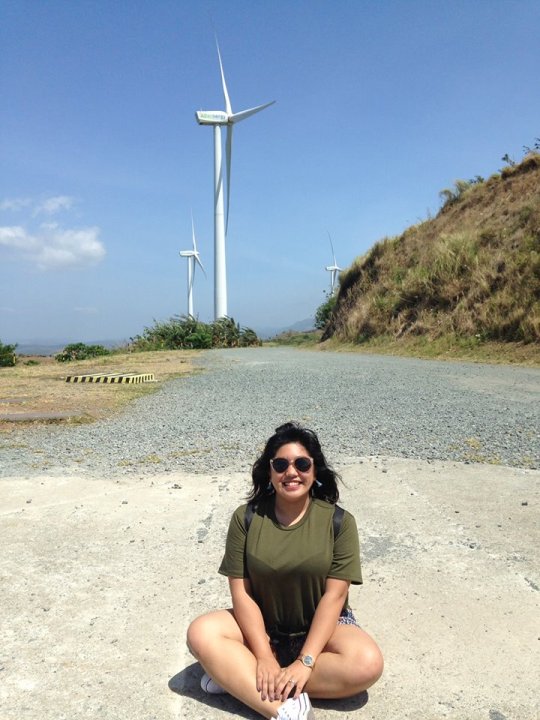
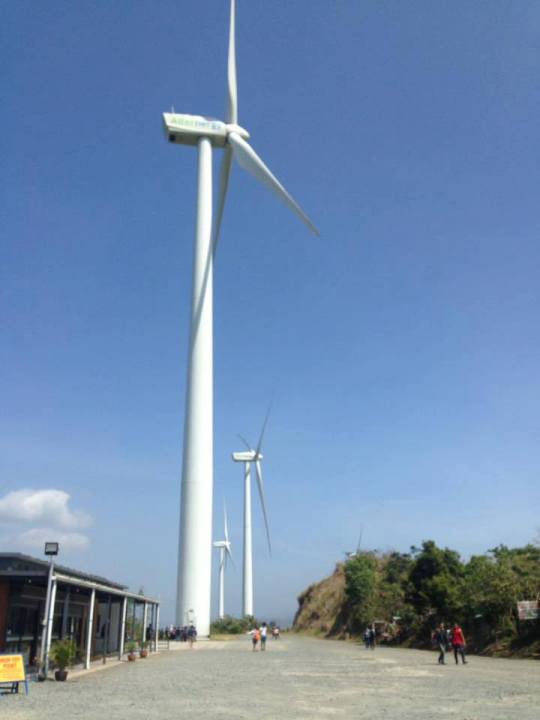
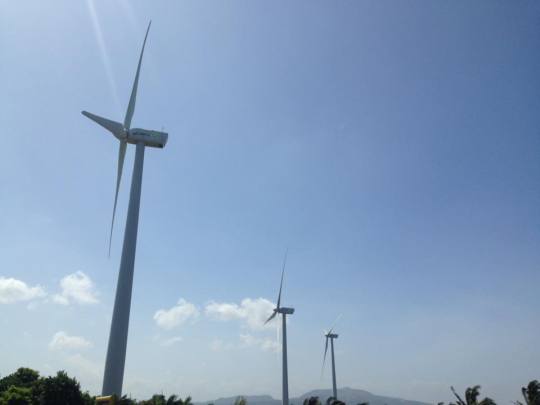
Why travel for 10 hours for Bangui Ilocos if Pililla Rizal has their own wind farm? No need to travel that far to see it. Pillila Windfarm is just three hours away from Manila. Amazing view of Laguna de Bay can be seen from the top of the hills through Pililla wind farm. It is one of great place in Rizal that is worth to visit. It is also one of the instagrammable places to visit near Manila. I cannot help myself but to marvel the beauty of these amazing windmills. I have never been to Ilocos and I have never seen their windfarm upclose so seeing a gigantic windmills here in Pilliia is nothing more but mesmerizing. It is very interesting to note that the company behind the Pililla Windfarm is the same company that operates the windmills in Bangui, Ilocos Norte. When you visit here don’t forget to wear your comfy clothes and shoes because you need to walk uphill to see the wonderful windmills and the amazing view. It’s very windy up there so it’s better to not bring any umbrella. There are several stores there who sells souvenirs such as a wood crafted windmill, t-shirt, pins and ref magnet so don’t forget to buy one!
2. Caleruega Church, Nasugbu, Batangas
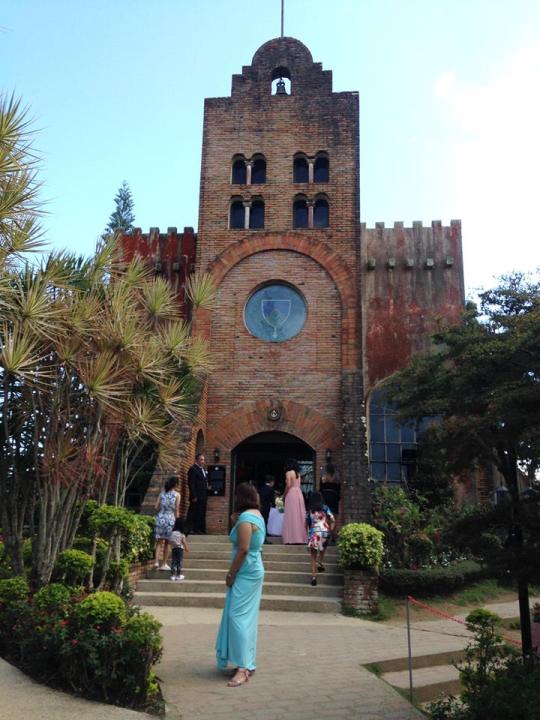

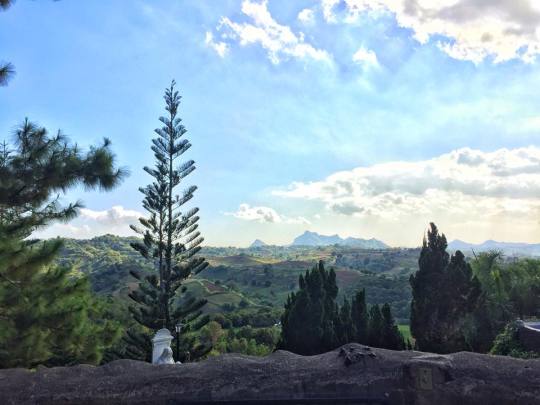
I attended a wedding here at first I didn’t know this place or heard about it, that’s why I Wonder why they want to held their wedding there. Caleruega is 4 hours’ drive from Manila. As for me, it would be my first time to see Caleruega, which is located in the Nasugbu, Batangas. The church is surrounded with well-maintained and beautiful gardens with different kinds of plants and flowers thanks to the cool, mild climate and fertile soils. The Caleruega is a place for relaxation, meditation, and being closer to nature and God. The people who live there believe that if you are “close to nature you are closer to God”. That’s, why Caleruega is a popular choice for weddings. Don’t forget to wear a rubber shoes or flats because you need to walk uphill stairs to get through the church. But once you get there the long walk is worth it! The view is superb so don’t forget to bring your camera! Tip: You better eat before you go there because there are no restaurant inside or store. Bringing outside food is allowed and you can rent some tables with tents at the garden but make sure to clean it as you go and throw all your trash on the proper garbage cans.
3. Camayan Beach Resort, Subic Freeport Zone
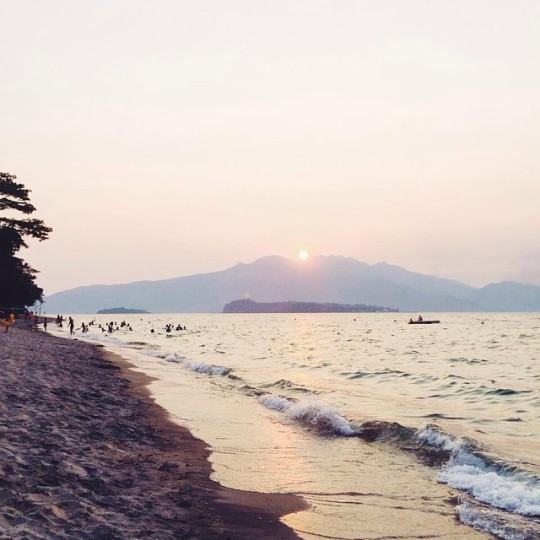


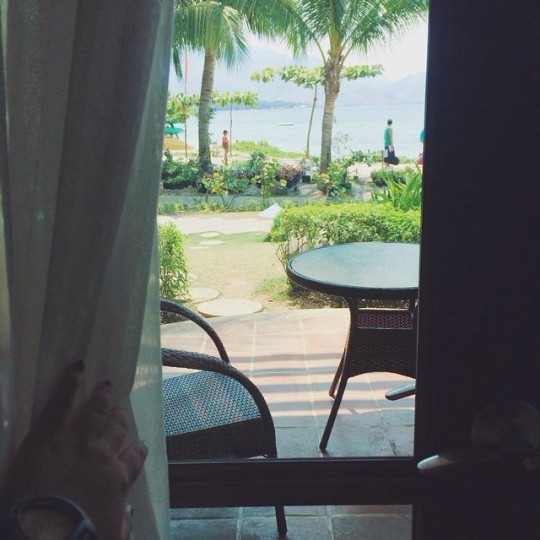
Since I was a kid my family always go to Subic on summer vacation or if we have a time to go out of town Subic is always our choice. When I think about Subic the things that comes to my head is Duty free, Casinos, Lot of foreigners, Zoobic Safari, Ocean Adventure & a very strict road policies. Don’t forget a lot of checkpoints. A LOT. I didn’t know that there is a clean and amazing beach inside the Freeport zone. To be honest the beaches outside Subic at Olongapo is not that clean and very populated. That’s why when we are going there we prefer to stay in a hotel inside the Freeport zone. But when we found out about this beach resort near Ocean Adventure we didn’t think twice to book and stay there for 3 days. It’s a 5-6 hours’ drive from manila via SCTEX. When we got there I had nothing but praises from the comfort of our hotel room to the good customer service we felt from the staff and a good view from our hotel room. Camayan Beach Resort is your ideal vacation away from Manila's chaotic crowd. The Resort is so peaceful and not crowded. Good place to unwind. It’s a bit long drive from the city where there are a lot of stores so you better buy everything you need before going to the resort. If you want to take your breakfast, lunch or dinner they have resident restaurant called The Reef where you can order delicious food in reasonable price. Oh! Don’t forget to always lock your rooms because there a lot of monkeys there, so staffs always put signs to make sure you close your doors often. I wish though you don't get turned off to these gentle animals because having them means you're in a place where nature is still healthy. Nights there are super cozy. They have live bands at night so you can drink or eat beside the beach while listening to the performers. My overall stay there is really amazing! Tip: Never leave Camayan Beach Resort without catching the sunrise or sunset! It's a marvelous feeling.
4. Laiya, Batangas

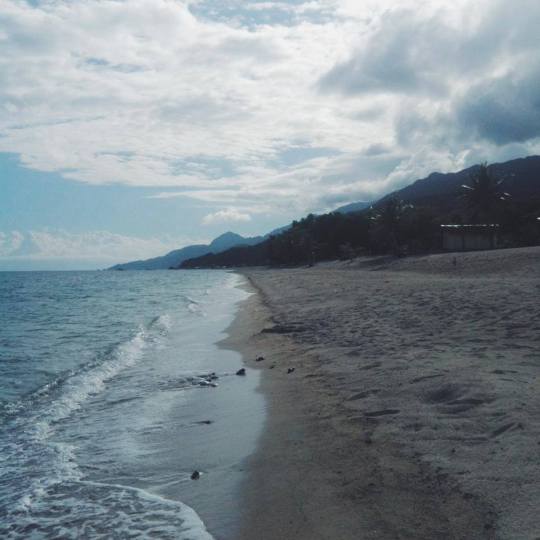
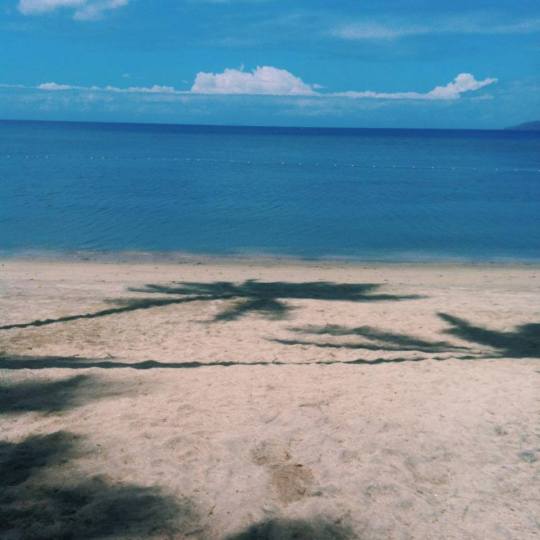
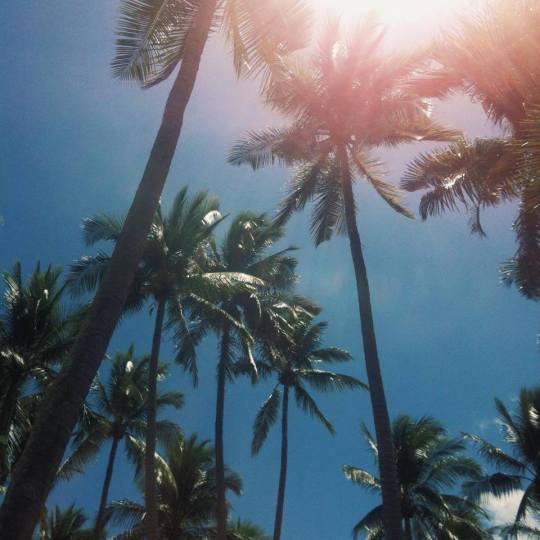
There are a lot of beaches in Batangas and Laiya is one of them. Just 3-4 hours drive from manila and you will experience a relaxing sight of coconut tress and a long stretch of white sand beach where you can find various private resorts to choose from. The sand is not as white as the well-known Boracay but this is so far the best alternative if you prefer white beach somewhere near Manila. We go there on low season because the water is much clearer. During the peak season some parts look polluted especially in public areas where it is very crowded. What’s good in here is that the waves are not that big so it looks really safe for adults to swim around while the kids should never be left without supervision. You can rent “bahay kubos” or tents there in affordable price. Tip: You better take a mini grocery shopping before you go there!
5. The Greenery, Bulakan

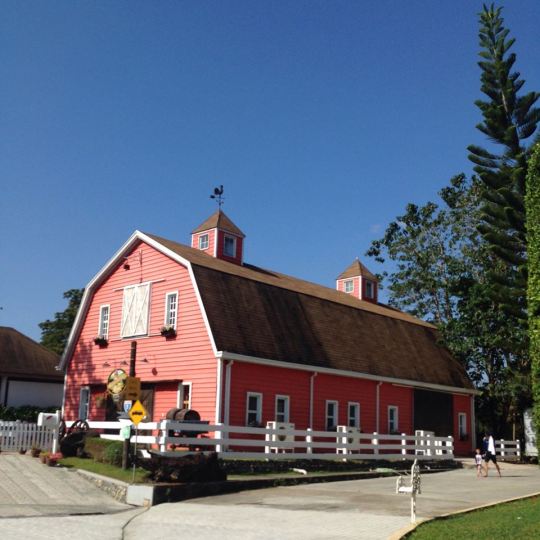
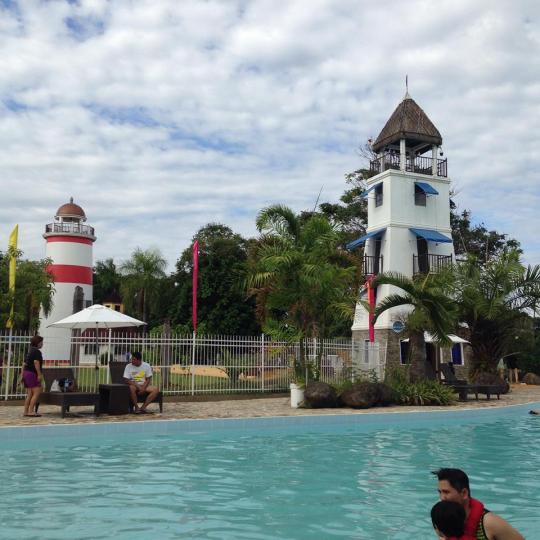

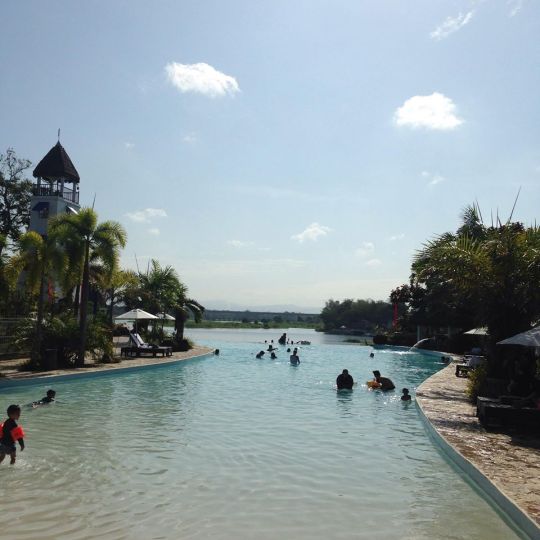

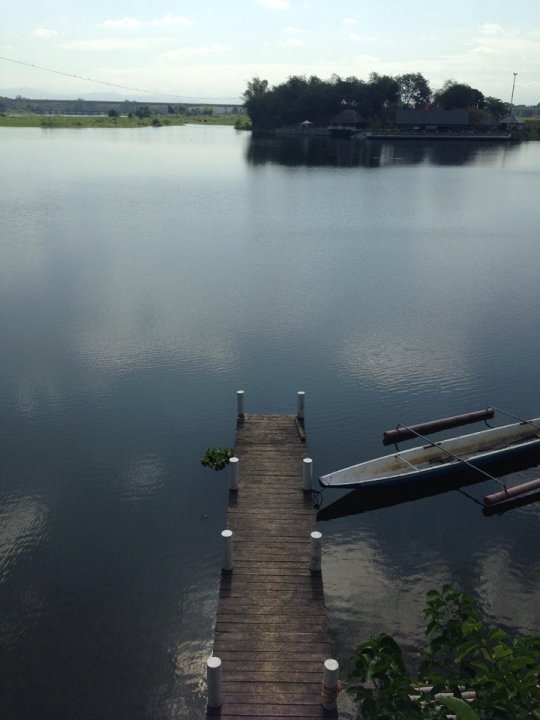
My cousins are looking for a place to chill and to bond when they discover this place. They offer various rooms. They even have a room for 8 persons, so if your barkada or family wants to go somewhere near to escape the busy metro this is the best place you can go to. It is only 2 hours away from Manila. The Greenery is an American themed resort and events place in Baliwag, Bulacan that features infinity pools, lighthouse, garden, pavilions, floating gazebo and more. It is an ideal place for pictorials, company outing, team building or any special occasion. The place is very cozy, starting from the American inspired houses and barn. The infinity pool is amazing. Don’t forget to catch the beautiful sunset from the infinity pool. They offer Buffet for breakfast, lunch and dinner so you don’t have a problem to go out the village and somewhere to eat. Nights swimming there is the best! The water is warm and there are a live bands there every night.
5. Crisostomo

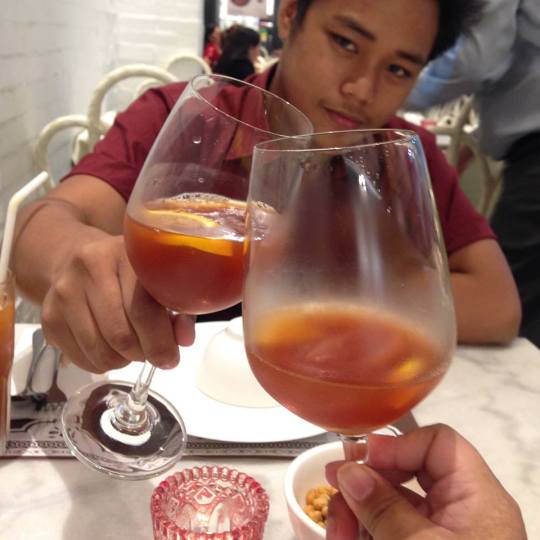
It’s Valentines when me and my boyfriend dine here. It’s a bit crowded but still a romantic fine dining place to dine in. Crisostomo Restaurant features delicious Filipino foods with a twist. It’s not the regular Filipino restaurant that you can see in almost every corner in the metro. Most of its menu items are named after characters from Rizal’s novels. The interior there is very cozy and solemn that’s why it’s best for a quiet get together with your family and friends. The staffs are nice and very accommodating. The service is fast. We ordered a sinigang gomez which is a pork sinigang on sampalok, Adobo Damaso a Twice cooked chicken and pork adobo topped with adobo flakes, kesong puti and kamote, Liwayway which is a Daing na bangus with crispy garlic and Leonor a red wine sangria. The food is amazing it’s a bit pricey but it’s reasonable because the food is delicious and the serving is big. They also have a live band there which is composed with one who play the piano and the one who play violin. It’s all package! A nice resturant with a nice ambiance, a delicious food, accommodating staffs and a very romantic music playing at the back. What more can you ask for?
7. Ice Flower, Sm North Edsa
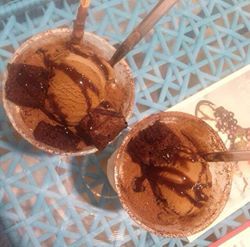
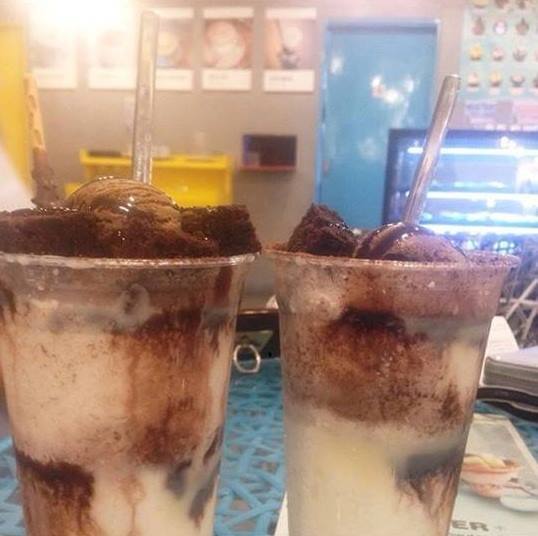
I never thought that there is a big Korean dessert parlor at the Sm North. It is located at The Block near the entance at the parking lot so it’s not that noticeable. My bestfriend brought me here when she found out that I never try a Snow Bingsu or what they called a Korean halo-halo. The place is very big and the ambiance is amazing. The place is so colourful and the chairs are super comfy. We ordered a choco brownie bingsu which is very good. The price is bit high for dessert like that but I think it’s reasonable because the serving of the small bingsu is already good for 2-3 people. Oh! Don’t ever go home not until you try to play in their indoor snow machine.
8. Shorthorn Pares
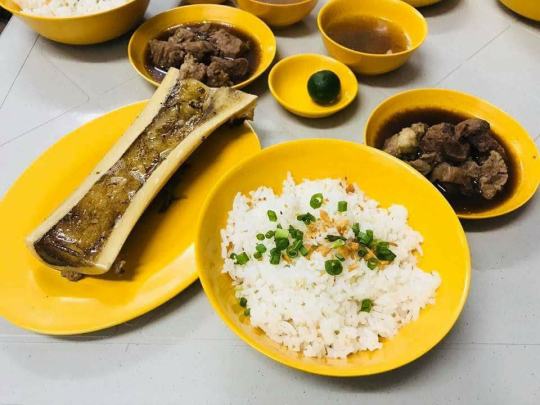
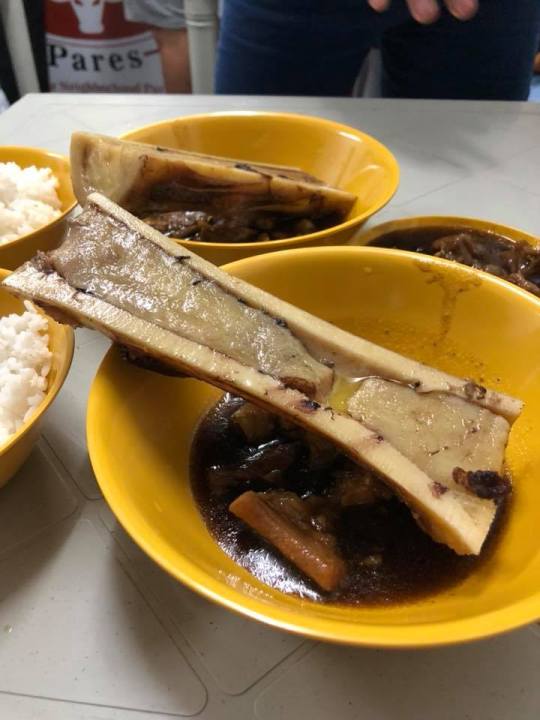
This pares in Project 8 is serving a butok batok bulalo bone. It’s near to our house that’s why whenwe heard about it we already go there and try the talk of town Beef Pares paired with a creamy melt in your mouth bone marrow delight! It is a “carinderia” type paresan. The area is a bit small so you must go there early because lot of people from our barangay is falling line there just to try the famous hb pares.
9. Vanilla Cupcake Bakery, Mother Ignacia, Quezon City

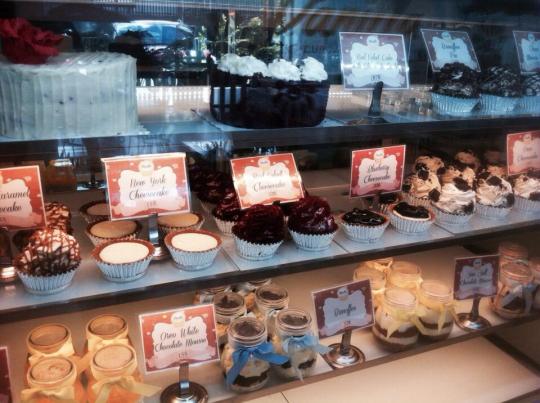


I held my pre debut shoot here because the place is not crowded and the interior and the ambiance here is really pretty. Besides the place their food and cupcakes are a must try! It's like every little girl's tea party dream brought to life. The store has a lot of nice furniture in it. There a lot Daphne chairs around the store. They are so pretty and comfy! The place is very dreamy it is a good place to make chikas with your amigas or bffs!
10. Funnside Ningnangan, Guiguinto, Bulakan
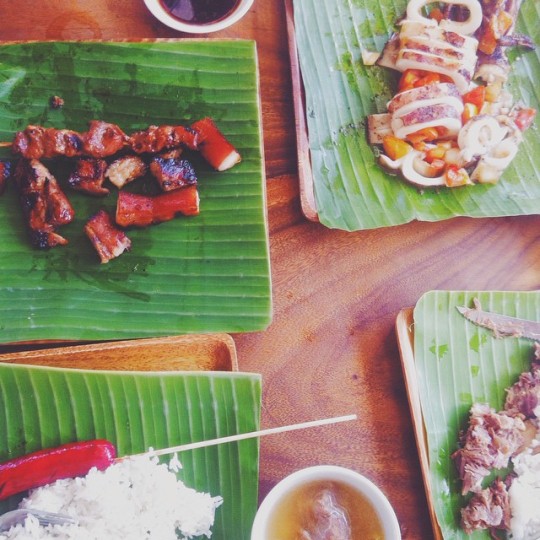
My father is from bulakan that’s why he knows the delicious and affordable restaurant around bulacan. The first time my father brings me here I got so excited to experience to pick the food you want them to cook for you. The foods are literally infront of you and you will get a big plate and pick the food you want and pay it. Funnside Ningnangan is a self-service restaurant located at Sto. Cristo, Guiguinto, Bulacan. Ningnangan is a Kapampangan word that means ihaw or grill. They are offering grilled seafoods, meat, vegetables, noodles, desserts and many more for a very affordable price.
0 notes
Text
UTA PA Announcer Matt Sneed featured in The Shorthorn
UT Arlington Mavs Blog By Arianna Vedia | TheShorthorn.comUTA PA Announcer Matt Sneed joined up with Arianna Vedia, a sports reporter for the University’s student publication, The Shorthorn, to tell his story about what influenced him to get into the profession and what has driven him thus far. Growing up in the Metroplex, Matt Sneed looked…
UTA PA Announcer Matt Sneed featured in The Shorthorn
0 notes
Text
Levi's Vintage Clothing SS17 "Forever Changes"
The Summer of ’67 became a defining moment of the 1960s as the San Francisco counterculture movement came into public awareness.
A generation was emerging that was suspicious of the government, rejecting the conformist values of Cold War America and demanding cultural and social change. The “Human Be-In” held in the Golden Gate Park that January was the calling card for the “Summer of Love”. Soon the curious youth of America were making the pilgrimage West to “Turn on, Tune in and Drop Out.” Psychedelic groups were forming in every major city. Popular music exploded during this highly creative period that saw debut albums by The Pink Floyd, The Doors, The Jimi Hendrix Experience and The Velvet Underground.
For Spring / Summer 2017, Levi’s Vintage Clothing celebrates the 50th anniversary of the Summer of Love, the optimism of youth, and the legacy they left behind.
Levi’s Vintage Bay Meadows Sweatshirt 21931-0006 Black Xx Price: £119.00
Levi’s Vintage Bay Meadows Sweatshirt 21931-0007 White Mele Price: £119.00
Levi’s Vintage Shorthorn Shirt 23863-0007 Check Peanut Price: £149.00
Levi’s Vintage Shorthorn Shirt 23863-0008 Check Ecru Price: £149.00
Levi’s Vintage 1960’s Jacquard Tee 29155-0000 Floral Blue/Yellow Price: £75.00
Levi’s Vintage 1960’s Casual Stripe Tee 31960-0038 Peanut & Jelly Stripe Price: £75.00
Levi’s Vintage 1960’s Casual Stripe Tee 31960-0039 Multi Flavour MF Stripe Price: £75.00
Levi’s Vintage 1966 501 Jeans 66501-0128 Rigid Price: £179.00
Save
Save
Levi’s Vintage Clothing SS17 “Forever Changes” was originally published on Hanon
0 notes
Text
Opinion: Abortion ban could foreshadow the recriminalization of gay marriage
#school: university of texas arlington#publication: the shorthorn#year: 2021#genre: opinion#subject matter: national#subject matter: texas#subject matter: lgbtq+
0 notes